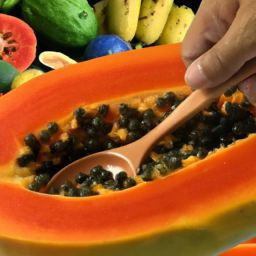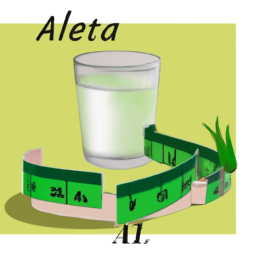As a dog owner, there is almost nothing worse than discovering that your cherished pup has been sprayed by a skunk. The strong odor seems to stick around no matter how many times you wash your furry friend.
You may have heard that tomato juice is the solution to getting rid of skunk smell, but I’m here to tell you that it’s not the best option. Let’s face it, tomato juice is messy and can stain your dog’s fur. Plus, it’s not very effective at removing the skunk smell.
So, what should you do instead? In this article, I’ll share with you some tried and true methods for getting rid of skunk smell on your dog, without using tomato juice. Trust me, your nose (and your dog) will thank you.
Key Takeaways
- Tomato juice is not effective for removing skunk smell on dog
- Homemade skunk odor removers can be made with baking soda, hydrogen peroxide, and dish soap
- Skunk odor removers target sulfur compounds causing unpleasant odor
- Use skunk odor remover after washing dog with hydrogen peroxide mixture to completely eliminate odor.
Understanding Skunk Spray
Hey dog owners, wanna know how skunk spray works and why it’s so hard to get rid of? Let’s dive into the stinky science behind it!
Skunks release their spray as a defense mechanism against predators or perceived threats. This spray is a mixture of chemicals, including sulfur-based compounds, that can cause irritation to the eyes, nose, and skin. Skunks have two glands on each side of their anus that produce the spray, which can be directed accurately up to 10 feet away.
Prevention methods are the best way to avoid your dog getting sprayed by a skunk. Skunks are mostly active at night, so keeping your dog indoors during these times can reduce the chances of an encounter. Additionally, skunks are attracted to food and garbage, so keeping your yard clean and secure can help prevent them from coming onto your property.
Now that we understand the science behind skunk spray and how to prevent it, let’s move on to the next section and learn why tomato juice is not the solution to getting rid of skunk smell on your dog.
Don’t Use Tomato Juice
Instead of relying on tomato juice, I can share an alternative solution for removing skunk odor from your dog. You can use a mixture of hydrogen peroxide, baking soda, and dish soap to effectively get rid of the smell.
This natural remedy is safer and more effective than using tomato juice. The American Society for the Prevention of Cruelty to Animals recommends this method since tomato juice only masks the smell and can cause skin irritation for your dog.
You can easily make the solution by mixing one quart of hydrogen peroxide, a quarter cup of baking soda, and a teaspoon of dish soap. After applying the mixture to your dog’s fur, let it sit for about five minutes before rinsing it off. It is important to note that you should avoid getting the solution in your dog’s eyes or mouth.
To completely eliminate the skunk odor, use a skunk odor remover after washing your dog with the hydrogen peroxide mixture. This will ensure that there are no lingering smells and your furry friend can be back to their fresh and clean self.
Use a Skunk Odor Remover
You can completely eliminate the lingering skunk odor from your dog by using a skunk odor remover. There are various types of skunk odor removers available in the market, ranging from shampoos to sprays. These removers are specifically designed to target the sulfur compounds that cause the unpleasant odor.
Here are some types of skunk odor removers you can consider using:
- Skunk Off: This is a popular skunk odor remover that comes in a spray or shampoo form. It contains natural enzymes that break down the sulfur compounds and eliminate the odor.
- Nature’s Miracle Skunk Odor Remover: This product is formulated with natural ingredients that neutralize the odor and remove stains.
- OdorMute Skunk Odor Remover: This is a powder that needs to be mixed with water. It is effective against skunk odor as well as other pet odors.
- Homemade skunk odor remover: You can also make a skunk odor remover at home using baking soda, hydrogen peroxide, and dish soap. Mix these ingredients and apply the solution to your dog’s fur.
To prevent skunk encounters in the future, keep your dog on a leash when outside, especially during dawn and dusk when skunks are most active. Additionally, avoid leaving food outside as this can attract skunks. With these precautions in place, you can avoid another smelly encounter with a skunk.
To ensure that the skunk odor remover has completely eliminated the odor, it’s important to bathe your dog thoroughly.
Let’s explore how to do this in the next section.
Bathe Your Dog
Now it’s time to give your furry friend a refreshing bath to ensure that they smell fresh and clean once again.
First, wet your dog’s coat thoroughly with lukewarm water, avoiding their eyes and ears. Then, apply a pet-specific shampoo that’s designed to neutralize skunk odor. Be sure to massage the shampoo into their coat, making sure to get all the way down to their skin.
Rinse thoroughly, and repeat the process if necessary. After the bath, it’s important to use proper drying techniques to prevent any further odor. Use a towel to gently pat your dog dry, being careful not to rub too vigorously. If your dog’s willing, you may also use a hairdryer on a low setting, making sure to keep it at least 6 inches away from their skin.
Once your dog is fully dry, take steps to prevent future skunk encounters, such as keeping your dog on a leash and securing your trash cans. To continue removing the skunk smell, use a homemade skunk odor remover.
Use a Homemade Skunk Odor Remover
To combat the lingering odor from the skunk encounter, try mixing baking soda, hydrogen peroxide, and dish soap together to create a DIY recipe that will effectively remove the skunk smell from your dog’s fur. This natural solution uses ingredients that are safe for your pet and can easily be found in your kitchen or local store.
To create the skunk odor remover, mix 1 quart of 3% hydrogen peroxide, 1/4 cup of baking soda, and 1-2 teaspoons of dish soap in a large bowl. Apply the solution to your dog’s fur, making sure to avoid their eyes and ears, and let it sit for 5-10 minutes before rinsing thoroughly with water.
This homemade remedy will not only neutralize the odor, but it will also leave your dog’s coat feeling soft and clean. Once you’ve finished bathing your pup, it’s important to clean their collar and leash to ensure that the skunk smell doesn’t linger.
Clean Your Dog’s Collar and Leash
After neutralizing the skunk odor on your furry friend, it’s crucial to ensure the lingering smell doesn’t stick to their collar and leash. Choosing materials that don’t absorb odors, such as nylon or rubber, can prevent the smell from lingering. Additionally, ensuring that the collar and leash fit properly will prevent the odor from transferring to your dog’s fur.
When cleaning the collar and leash, it’s important to follow the manufacturer’s instructions for cleaning and care. Using a mild detergent and warm water can help remove any lingering odors. It’s also important to thoroughly rinse and dry the collar and leash before putting them back on your dog.
By taking these steps, you can ensure that the skunk odor doesn’t stick to your dog’s accessories and cause further discomfort.
As we move into the next section, we’ll discuss how to use an air purifier to further eliminate any lingering odors in your home.
Use an Air Purifier
You can easily eliminate any remaining skunk odor in your home by using an air purifier. Air purifiers are great at removing airborne particles, including the odor from skunk spray. Not only can an air purifier help with skunk odor, but it can also improve the overall air quality in your home. This is especially important if you or someone in your household suffers from allergies or respiratory issues.
When choosing an air purifier, there are a few things to consider. Look for a purifier with a HEPA filter, which can capture small particles like pet dander and pollen. Additionally, consider the size of the room where the air purifier will be used and choose a purifier with a corresponding CADR (Clean Air Delivery Rate) rating.
With the right air purifier, you can quickly and effectively eliminate skunk odor from your home.
Consider professional grooming to fully remove the skunk smell from your dog’s fur.
Consider Professional Grooming
If you’re tired of dealing with the lingering odor, let a professional groomer take care of removing the skunk scent from your furry friend’s coat. Benefits of professional grooming go beyond just removing skunk odor. Groomers can help maintain your dog’s coat health and hygiene, keeping it free of tangles, mats, and dirt.
They can also provide additional services like nail trimming, ear cleaning, and teeth brushing. When considering professional grooming, it’s important to find a reputable groomer. Ask for recommendations from friends, family, or your veterinarian.
Look for a groomer who’s experienced, certified, and has good reviews from previous clients. A good groomer will also be able to answer any questions you have about the grooming process and provide helpful tips on how to maintain your dog’s coat between appointments.
With the skunk smell taken care of, it’s important to monitor your dog’s health to ensure there are no lingering effects from the encounter.
Monitor Your Dog’s Health
To ensure your furry friend is feeling their best after encountering a skunk, it’s important to keep a close eye on their overall health. Skunk spray can cause irritation to a dog’s skin and eyes, so it’s crucial to monitor any signs of discomfort or inflammation.
Regular check-ups with a veterinarian can help detect any underlying issues and ensure that your dog is on the right track to recovery. In addition to regular check-ups, it’s important to manage your dog’s nutrition.
Skunk spray can cause loss of appetite, so it’s important to encourage your dog to eat and drink water. Provide them with a balanced diet that includes essential nutrients and vitamins to support their immune system. A healthy diet can also help improve their skin and coat health, which is essential for a speedy recovery from skunk spray.
By monitoring your dog’s health and nutrition, you can ensure that they are feeling their best and are able to recover from any unpleasant encounters with skunks.
Frequently Asked Questions
How long does it take for the skunk smell to wear off naturally?
It can take several days for skunk smell to wear off naturally, but there are natural remedies and a bathing routine that can speed up the process. It’s also important to identify and remove skunk spray residue from your home’s interior and exterior surfaces.
Can skunk spray cause any health problems for dogs?
Skunk spray can cause health concerns for dogs, such as eye irritation, vomiting, and respiratory distress. Symptoms can be managed with treatment and prevention strategies, but long term effects may occur if left untreated.
Is it safe to use skunk odor remover on other surfaces besides your dog?
When using a skunk odor remover, be sure to follow safety precautions and only use it on recommended surfaces. If unsure, consider alternative remedies such as baking soda and hydrogen peroxide.
Can you prevent your dog from getting sprayed by a skunk in the future?
I’ve learned that skunks aren’t easily deterred, but there are preventive measures to lessen the likelihood of your dog getting sprayed. Skunk deterrents include motion-activated sprinklers, strong-smelling plants, and secure trash cans.
How do you properly dispose of skunk odor remover or other cleaning products used on your dog?
To properly dispose of skunk odor remover or other cleaning products used on your dog, follow the instructions on the packaging or contact your local waste management facility. Improper disposal can have negative environmental impacts.
Conclusion
In conclusion, dealing with skunk spray on your dog can be a stinky and frustrating experience. However, it’s important to understand the nature of the spray and avoid using ineffective remedies like tomato juice. Instead, opt for a skunk odor remover that’s specifically designed for pets.
As pet owners, it’s our responsibility to ensure our furry friends are comfortable and healthy. Regular grooming and monitoring your dog’s health can prevent future skunk encounters. But just like with any unexpected situation, it’s important to have a plan in place.
So, if your dog ever encounters a skunk, remember to stay calm and follow these steps to quickly and effectively remove the smell. Let’s keep our pets happy and odor-free!
Ilana has been a vegan for over 10 years. She originally made the switch for health reasons, but soon found herself becoming more and more passionate about the ethical and environmental implications of a vegan lifestyle. Ilana is the author of The Graceful Kitchen, a blog all about veganism. She loves to cook up delicious and nutritious vegan meals, and share her recipes with others who are interested in leading a cruelty-free life. Ilana is also a strong advocate for using whole foods as the foundation of a healthy diet, and believes that going vegan is one of the best ways to achieve this.










